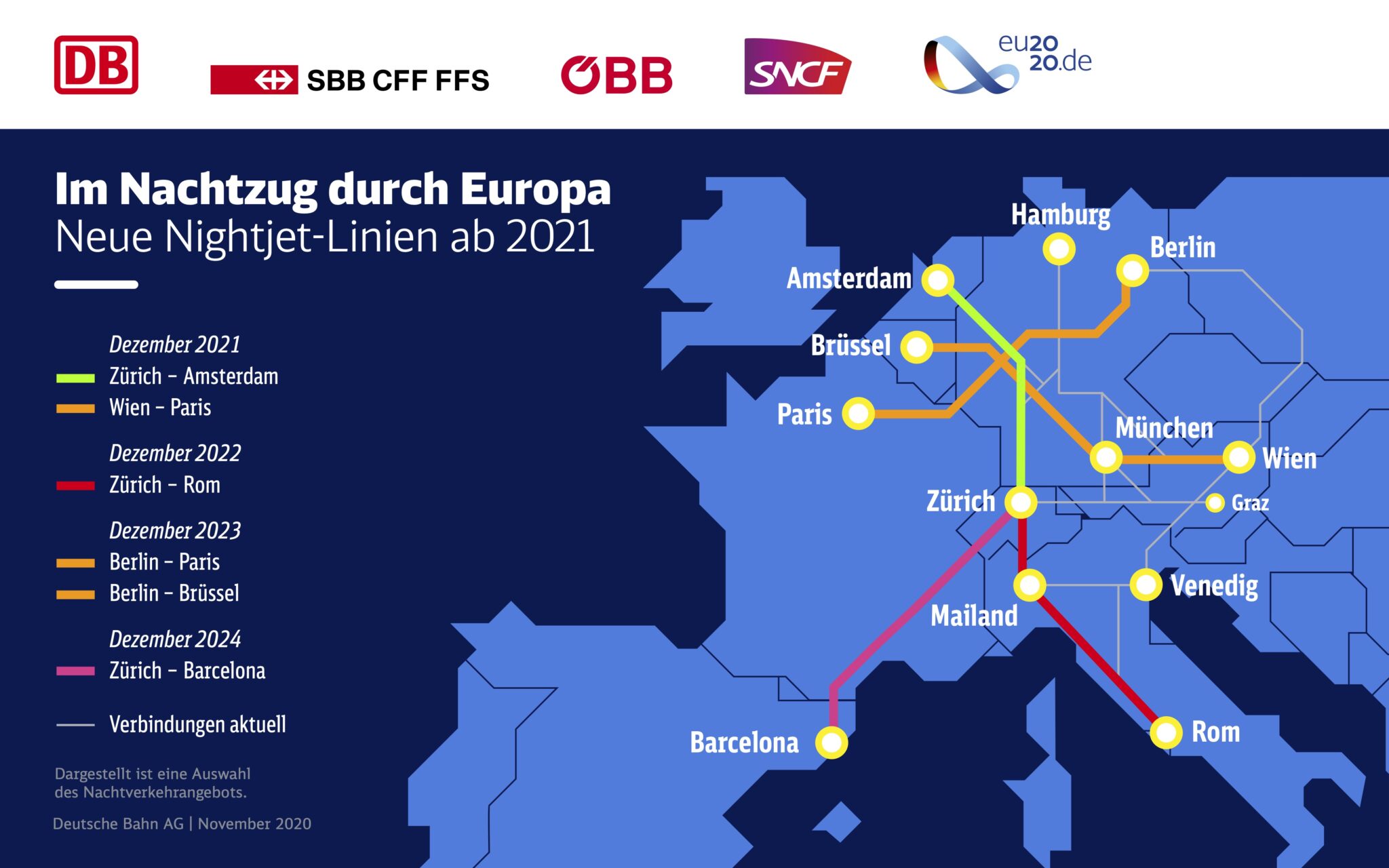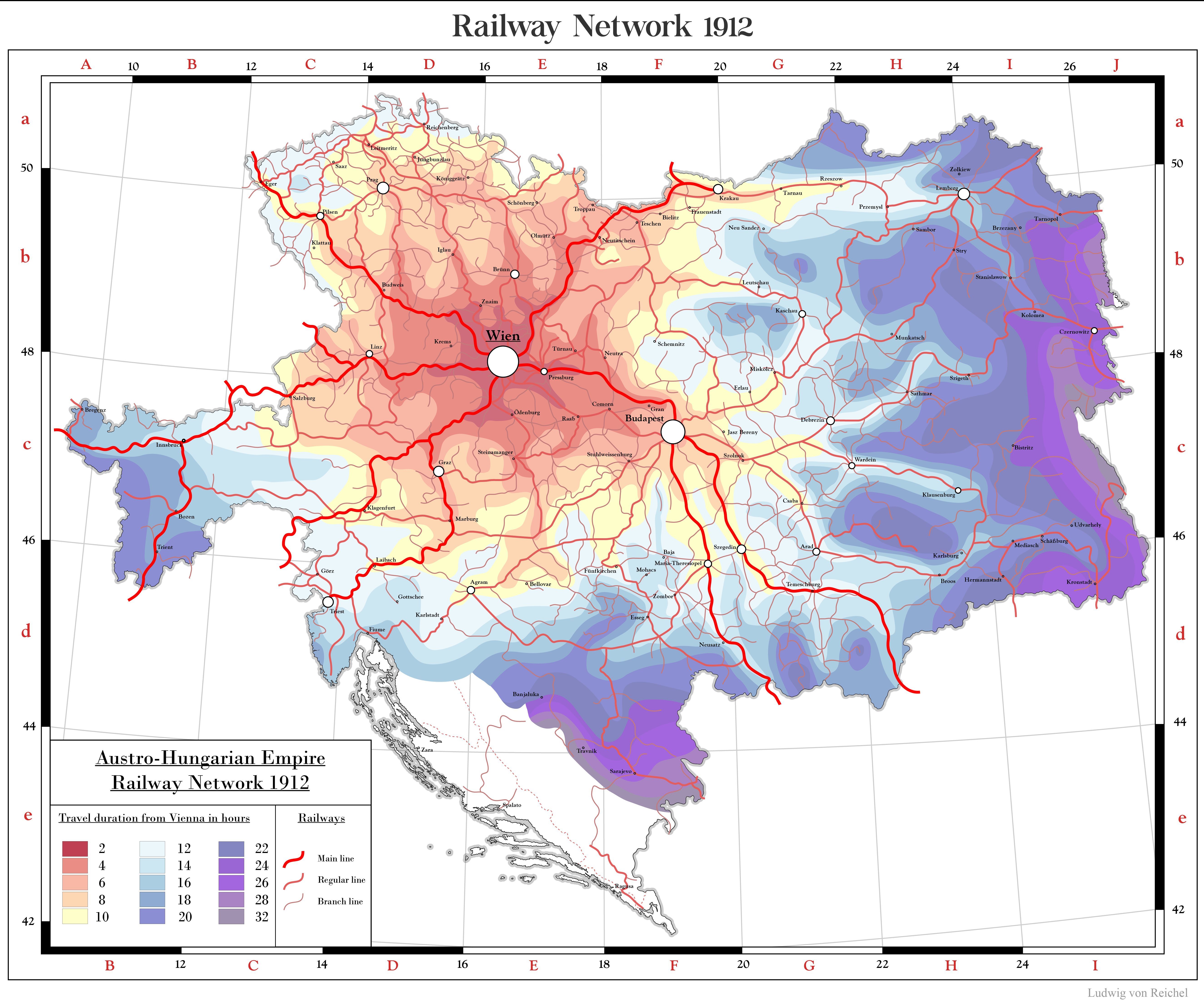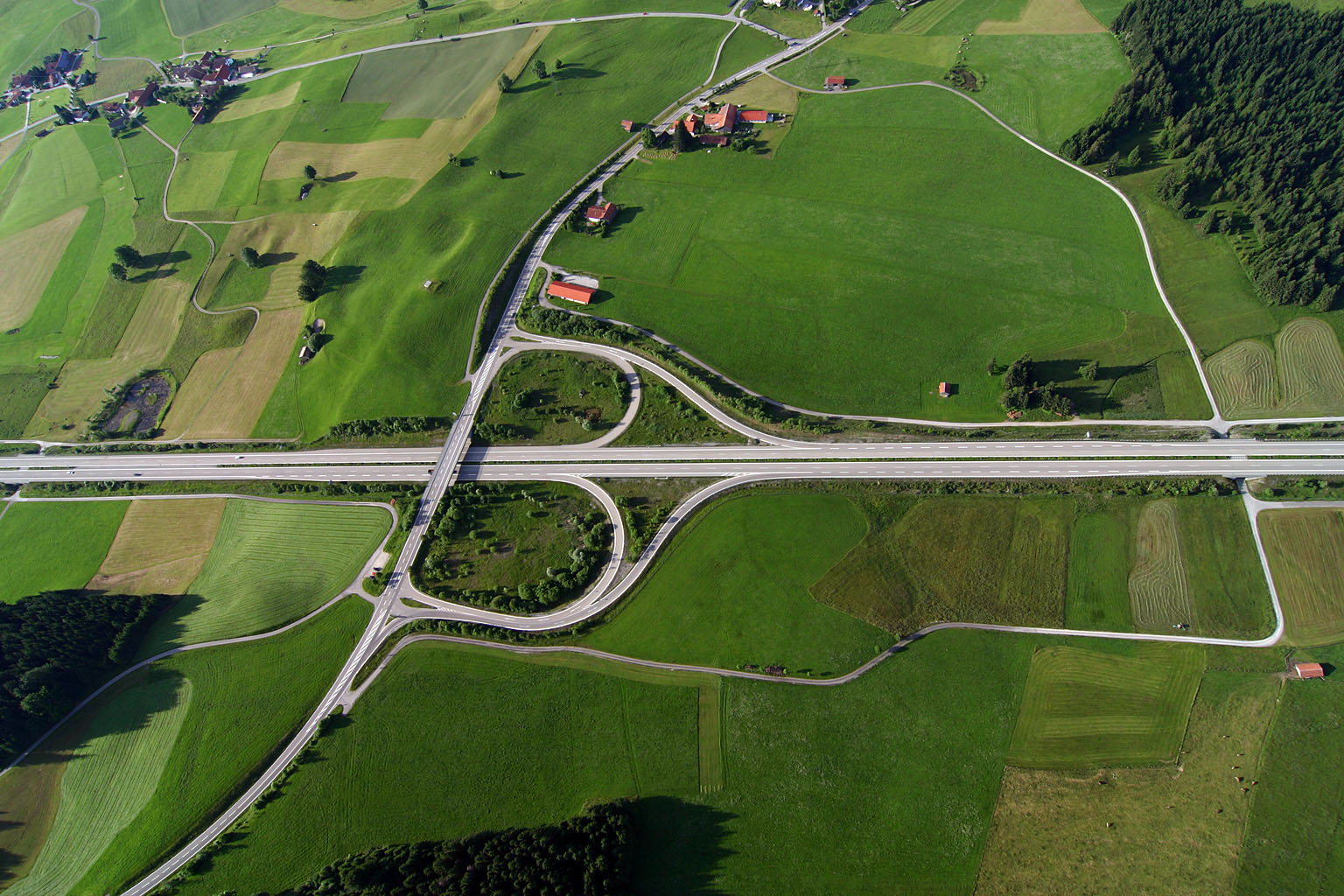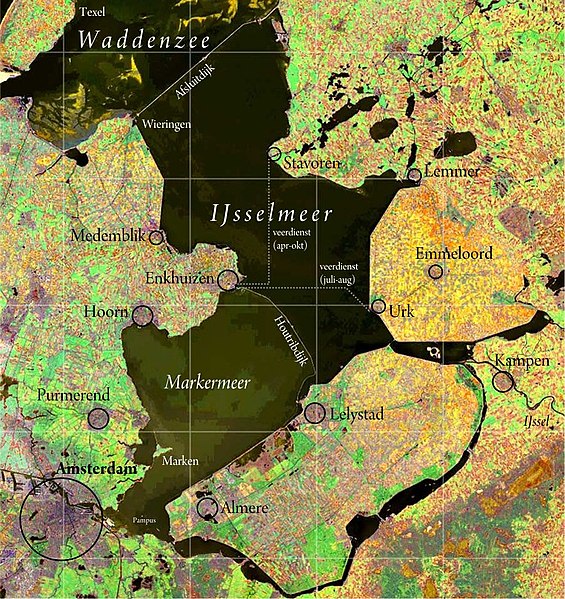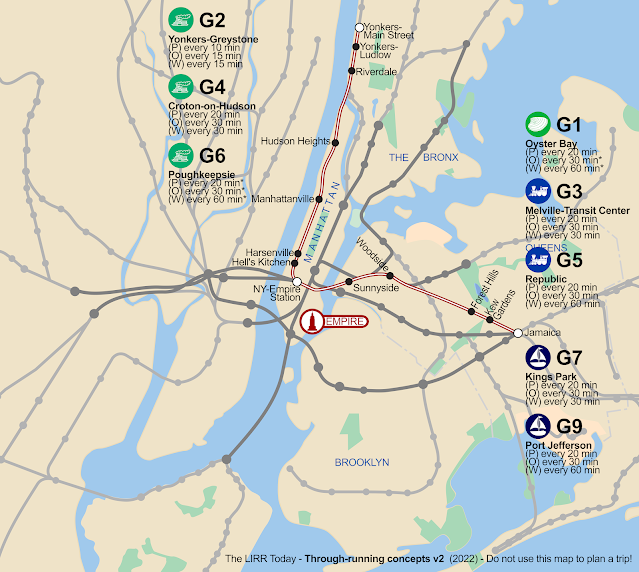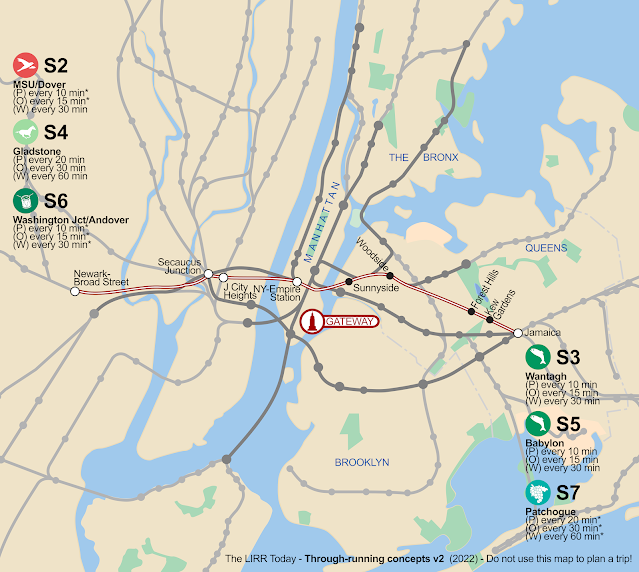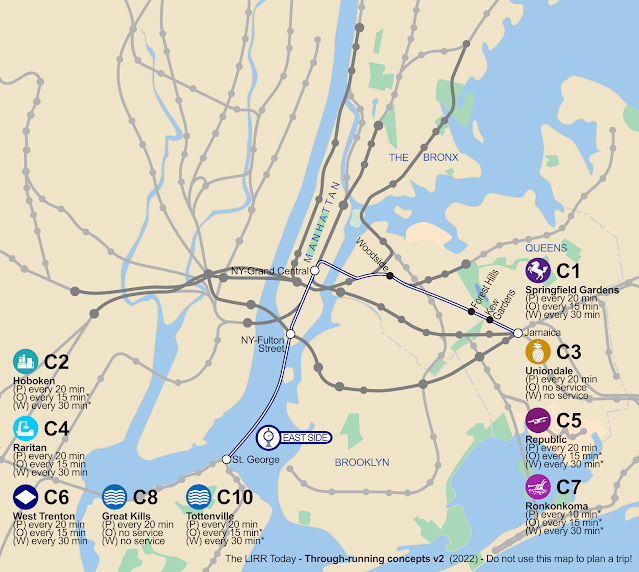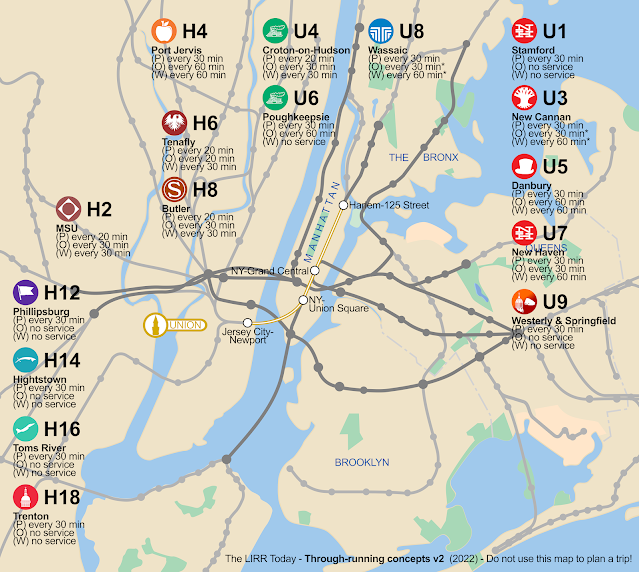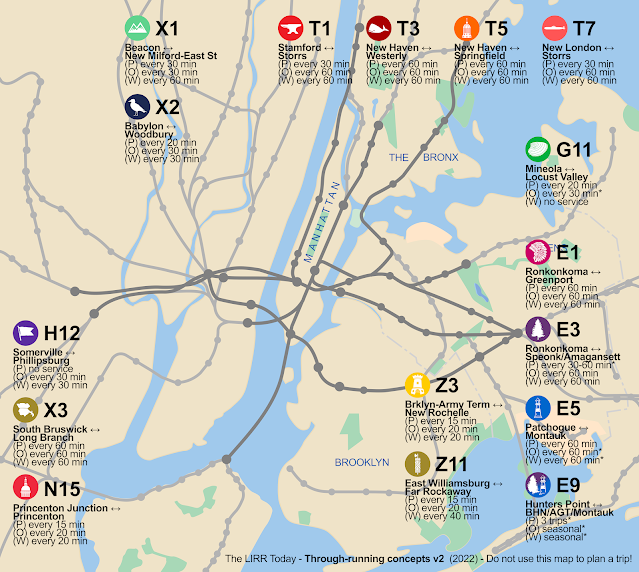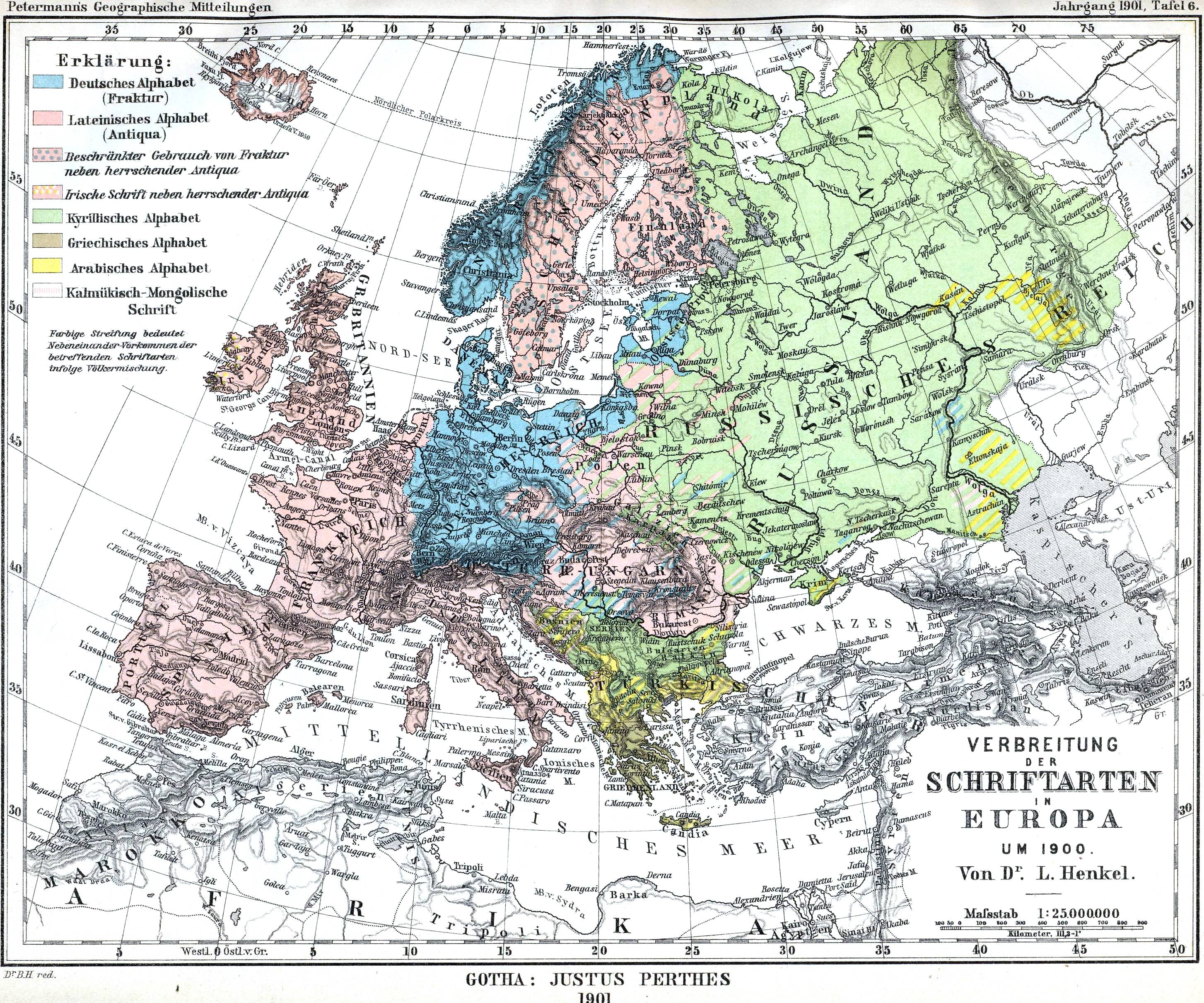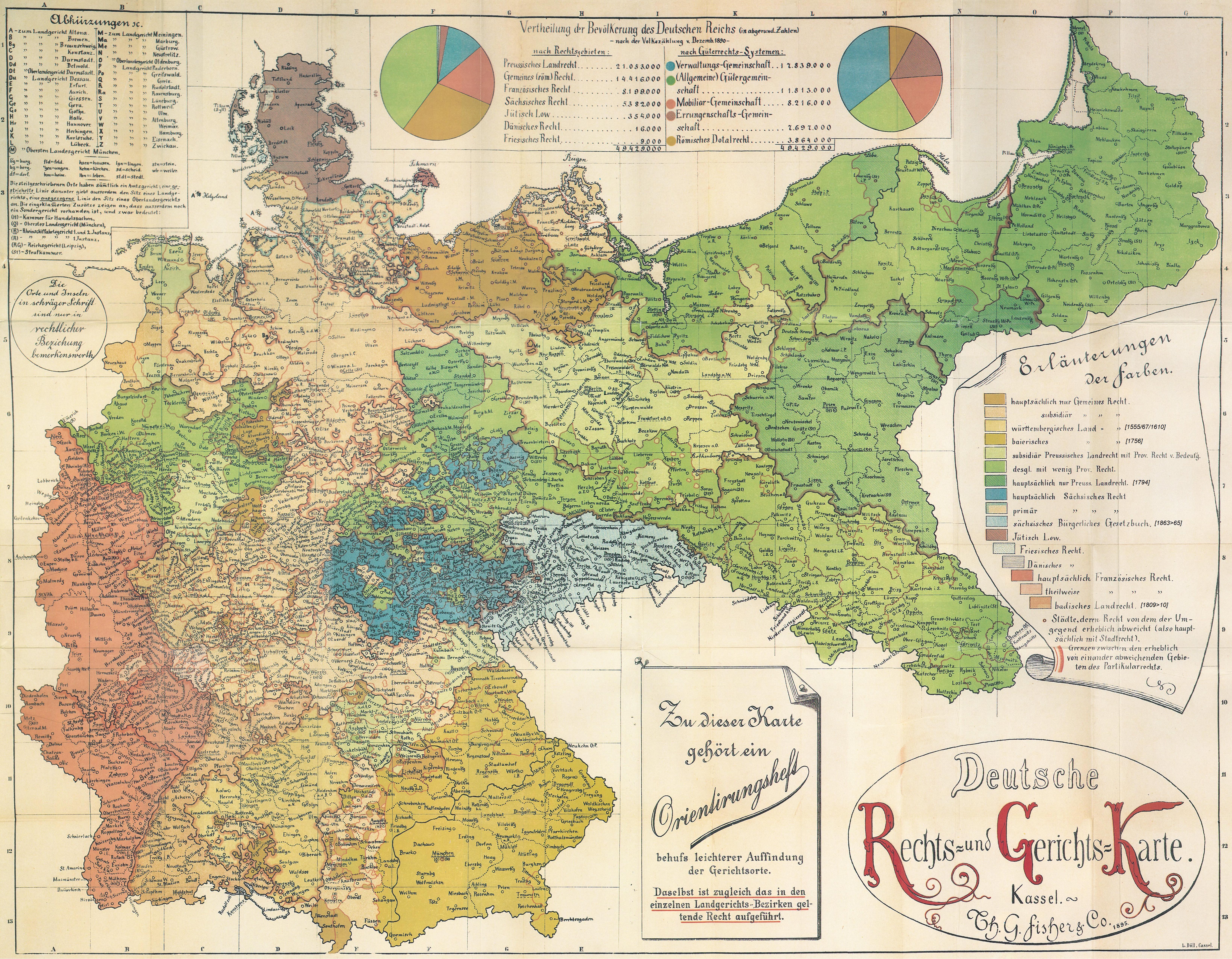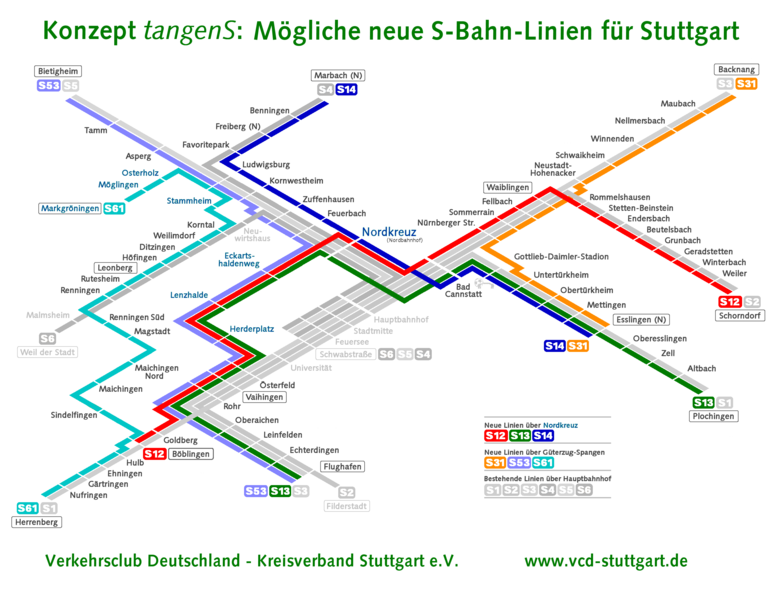Retrofitting (Part VII) - Modern Proxies For City Foundations
Before the Catholic University of Leuven split into a Flemish alma mater and a Walloon alma mater that prompted the construction of a "new Leuven" near Ottignies, the last proper town to be founded anew in modern-day Belgium was Charleloi in 1666 and the fact that Louvain-la-Neuve is just another borough of already pre-existing Ottignies makes it hard to make out a foundation date anywhere between 1966 (Episcopal Conference of Belgium demanding the linguistic split of the U) and 1972 (first residents moving in) as there's no formal act in a bulla you could watch in a museum. Outside of the playgrounds of European imperialism, the Early New Age seems like a time when the foundation of new settlements with special town privileges ceased to be cool. Planned communities have existed ever since rulers wanted a new capital for their domain, but here it's about developments made in the 20th century and still ongoing. You would be hard-pressed to find a city founded anew in the Industrial Age that was not functioning as an appendix to an already existing core. The closest thing to a new foundation would be the fusion of several municipalites into a new one. The classical British "new towns" like Milton Keynes (containing Betchley Park where the Enigma was cracked) or their French counterparts like Villeneuve-d'Ascq (the original Ascq being famous for a massacre by the SS) are no exceptions. In former West Germany, Fallersleben is to Wolfsburg (the renamed
Stadt des KdF-Wagens where the Nazis built the factory for the later VW Beetle) what Betchley is to Milton Keynes, the traditional core to a planned settlement that became so big that it swallowed its "mother town" as its mere borough. In former East Germany, the iron melting works of the newly founded Stalinstadt were merged with the old legacy town Fürstenberg (Oder) into Eisenhüttenstadt. In all these cases, you may call these developments substantial foundations of new towns that are more or less sustainable on their own and yet seemed to require legacy structures or nearby existing settlements.
Municipal reform happened everywhere before and after World War II and it was definitely desired that the urban structures grew together to some degree and some reforms just followed the facts on the ground, so it's clear that not every of these measures can be called a new foundation. What happened, however, is increased mobility of people and suburbanization and the growing segregation of dwelling and work created disparities and technological process means more expensive public services because people demand more from their offices. And motorized transport, whether private or public, enables a ride that would've been infeasible as a pedestrian or even a horse and that, ladies and gentlemen, is the reason how hamlets and towns turned into conurbations.
In order to streamline public services and private commerce to easily accessible places,
Walter Christaller gave the world the central place theory in 1933. Given the times, he sold it as the geographical realization of the Fuehrer principle for occupied Poland and it became the pattern how the settlements of the newest Dutch province Flevoland were placed. It shows very well how politics can hardly change geography and you cannot argue against physics. It was unavoidable for Almere to become the biggest suburb of Amsterdam, but Lelystad was placed as a centrally located political capital accessible from all directions. Given the title of this chapter, this is one of the few things you could actually call a new foundation and not just a proxy to it. Zuiderzee Works and Delta Works profoundly changed the Netherlands and Flevoland becoming the 12th province of the Netherlands in 1986 was no accident. Markerwaardpolder was never finished, however, and Marker Wadden is more about an ecological reconstruction of the place than any idea of settlement. Pampus may make a great target to relocate Asterdam Schipol Airport, yet its current location also arose on a polder, Haarlemmermeer.
It's no accident either that any polder planned but not drained by the 1970s would never see the light of the day.
This is also the time when NIMBYs started to pop up everywhere. Saturation, boredom, post-materialism. Quod erat demonstrandum.
In German reality at least, a state will define planning regions with at least two counties but hardly more than four and designate places as lower centers, medium centers and upper centers with the bigger stuff also doubling for the smaller stuff and the upper center offering anything you'd ever needed from department stores to higher learning to a maximum quality hospital. In many cases, one city won't do alone for upper-central functions, so it's actually common to define twin cities as upper centers (e.g. Tübingen with its U and Reutlingen with its industry), it's even triple and quadruple cities in Bavaria.
Bavaria with its eternally governing CSU with its sense of mission and Bavarian exceptionalism even introduced two new levels beyond upper center in its latest state development plan from the late 2010s just to show it off: Metropoles as in Munich, Nuremberg and Augsburg (one for each Bavarian "tribe" to appease proportional representation) and regional centers as in Würzburg and Regensburg (creating a legal compulsion to never ever stop an ICE stopping in their main stations) and you may feel pity for Bayreuth and Passau not to get that promotion as regional capitals (with the great honor of e.g. hosting psychiatric wards besides their regional authorities and assemblies) and Ansbach just serving as a political regional capital instead of Nuremberg for whatever reason. In my native Baden-Württemberg, we're more humble and designate the Eastern Württemberg region (Schwäbisch Gmünd, Aalen, Ellwangen, Heidenheim) as having no upper center at all and its four medium centers being required to serve upper-central function as a quadrilateral tandem. D'oh. The blueprint for his theory was indeed Southern Germany and he included Strasbourg and Zurich into the rubble just as much as Frankfurt, Stuttgart, Nuremberg and Munich.
Bavaria as the second-most populous state of Germany (both historically behind Prussia and in modern times behind NRW) is closest to ideal of "Einräumigkeit" which can be translated as "one-space-ity". The administrative regions or governorates (
Regierungsbezirk, Reg.-Bez.) which the state government uses to enforce the political will of the state is spatially congruent with the higher communal association (
höherer Kommunalverbrand) which are called
Bezirke which I just called regions in English. Before the German Municipal Ordinance of 1935 streamlined the designations of these entities after the Prussian model with
Gemeinden being municipalities and
Landkreise (or just
Kreise) being counties, the Bavarian counties were called
(politische) Bezirke as they're still called in Austria today and used to be called in Saxony also whereas these regions of Bavaria were called
Kreise and the Bavaria State Constitution of 1946 still retained these old labels despite the changed reality. A county in Württemberg used to be called
Oberamt ("upper office") and an
Amt is a form of inter-municipal association between municipal level and county level in some rural northern states and also exists in others under a plethora of names, those in Baden-Württemberg and Hessen called GVV (
Gemeindeverwaltungsverband or "municipal administration association"). That's German federalism at its best and that's beautiful. After the Congress of Vienna, Prussia itself divided its territory into
Provinzen and
Regierungsbezirke with examples of the former usually containing at least two of the latter and both being some form of governorates whose competences were hardly finally outlined until Prussia was dissolved and these provinces getting spatially congruent sister of higher communal association that were called
Provinzalverbände (provincial associations) getting their own
Provinziallandtag (provincial assembly/diet) with a
Landeshauptmann (land chief, governor) whose title is also used today for state governors in Austria. The provincial equivalent of a regional governor (
Regierungspräsident) was called
Oberpräsident, "upper-president". The double structure in Prussia shows that it's always been too big and actually half of Germany and that such a governorate is best of the size of a small state of Germany and there should be several ones in bigger states. The provinces of Prussia mostly became separate states after World War II and NRW becoming one out of two provinces just had to do with having a combined liveable state of the entire Ruhr and the two provincial associations besides the five governorates were partially superceded by the Ruhr association RVR.
When Poland reformed its administrative structure in 1999, the new 16 voivodships combined both congruent Bavarian institutions into one with the voivod being the appointed governor representing the central government like a
Regierungspräsident or an
Oberpräsident, the local Sejmik being the regional assembly and the marshall of the voivodship as its elected governor like a
Landeshauptmann. That's the beauty of doing it all from scratch. The former 49 voivodships that also had to work out without counties underneath them were more like
oblasti in Soviet SSRs with its municipalities being like
rajons. Prussia trying to have both the cake and eat it too with viable units on the one hand and direct territorial stealth on the other hand shows how stuff won't work out if it's all half-assed. The municipalities are divided into rural ones, urban-rural ones and urban ones that mop up the plethora of associations known from Germany from the start and there are, of course, independent city-counties as well.
If it's good enough for me, it must be good enough for you. If it's good enough for you, it must be good enough for me. (Courtesy of 2 Unlimited)
The French département system proved to be quite robust, only the Ile-de-France saw its two most populous départements split into seven as 5 million-ish people in Seine départment and 3 million-ish people in Seine-et-Oise département were deemed too big to govern and the smallest département still counts less than 100,000 inhabitants. On the other hand, planning regions turned into full-fledged subnational entities and reforms in the 2010s merged structurally week regions in metropolitan France into bigger regions to make them function and saw the introduction of metropoles as urban collectivities, inclusing Paris and its Petite Courunne with the latter seeing the construction of Grand Paris Express. So splitting the region around Paris was great for car plates, postal codes and phone numbers (the first and the last were overhauled anyway and the middle of them has another chapter in this thread and proved itself), but an integrated urban planning needed something different and that only came much later.
England in the UK saw the introduction of metropolitan counties and the extension of the County of London into Greater London whose organs were razed by Margaret Thatcher and only London getting it back in 2000. There was an attempt to introduce regions between the county level and the national level, but they were aborted because voters in North East England were against it. You should reconsider this and I mean it. Responsibilities have been heavily diluted to somehow "independent" or "autonomous" entities (I forgot the name of this stuff) that are paid for by the state and yet don't show who you've got to ask if you want something from them and I guess it's been on purpose due to Thatcherism. Taking back control is about naming clear responsibilites so that they may run but cannot hide.
Germany mostly saw fusions of many smaller counties into fewer bigger counties, in the late 1960s and early 1970s in the West and in the early 1990s and the late 2000s or early 2010s in the East and it's no coincidence that it's been in 2012, after the last reform of that kind, that car owners can have their old county code back for new registrations: Modern computerization and internet allows for one national code system anyway and if you only need to tell the DMV in the respective county office who has sinned instead of having to ask the DMV who that sinner is, it doesn't matter if one DMV has to manage multiple codes. The system should just be decent enough to assign any county code to one unambiguous county, thank you very much. Of course, you've still got municipal associations between municipal level and county level and often administrative offices between county level and state level and any of these bitches has got its own terminology in any state. Argh!
Jing-Jin-Ji with Xiong'an - New Town With Chinese Characteristics
Xiong'an is the Chinese attempt of a nation-level new town that's built as a relief for the nearby metropoles of Beijing (Jing) and Tianjin (Jin) to create a united metropolis of Beijing/Hebei (Ji), the project called Jing-Jin-Ji. It's beyond the Beijing-Daxing airport of a Beijing perspective (and accessed by said high-speed rail since the end of last year) and somehow halfway between Tianjin due east, Beijing due north, Baoding due west and Cangzhou down south. It's supposed to become and ecological and high-tech hub for the region and especially to downsize commuter times that are said to have added up to 2½ hours in one direction and therefore 5 hours in total every day. Stuff is deliberately to be moved out in order to make them more accessible for the ordinary comrade and the headquarters of the CCP are to become part of this as well in the long run and if only because the air will be better there. Jing-Jin-Ji, that's the beauty of Mandarin and other East Asian languages influenced by Kanji usage. It's way more practical than calling it capital region, urban Hubei or even something like "Ile de Chine" comparing it to French.
I remember how the German Diercke Atlas in its 1970s said that Tokyo has an "advantageous peripheral location" when it comes to aviation.
You could say the same about future Xiong'an that's supposed to fulfill the wish for high-speed rail connections under one hour among all of Jing-Jin-Ji.
The key here is high-speed rail and whereas the physical distance to the new estates of your old employer may not necessarily be closer than the old estates before, the travel time will because high-speed rail will bridge the biggest part of the new distances and drastically reduce the fraction of e.g. classical rapid transit constituting the respective last mile of O&D traffic. It's actually like creating a new center for the capital city outside the capital city, a new foundation so to speak and create express services in the green field that will become so much better than anything that could even theoretically be retrofitted into the existing urban settlement.
How hard it is to retrofit anything comparing the that into an existing conurbation
is actually the Ruhr that wants to upgrade its RE (Regional-Express) network in the RRX, the Rhein-Ruhr-Express. What's not shown here is that five of the cities in the Ruhr and Cologne got their own LRT systems in the 1970s and the desire to mesh the insular Ruhr networks never came to fruition and the reason may also have to do with the fact that the LRT may be handy, but not overly fast. The RRX running every quarter hour in the core route between Cologne and Dortmund thanks to four tracks between said end points (and even six between Düsseldorf and Duisburg) is supposed to solve that problem in order to somehow move even more people from the car to the trains as it's the closest thing to an actually realizable super-metro in the region. Considering all of this, it's quite elegant by the Chinese to build the express services long before the conurbations will grow into one.
About New Projects And New Campuses
Americans may be completely lost here (and maybe some other Anglo-Saxons too which may take automatic dormitory places in their college/university towns for granted), but the classical college town is an exception to the rule in many places on Earth. When the post-World War II economic boom made for a substantial expansion of the student population per cohort, this also meant that new buildings were necessary to house these expanded institutions. If a town got awarded a brand-new alma mater, it was quite easily to build a new campus at the edge of the city. College cities could easily expand as they were already built with it in mind and state universities were often de-centralized anyway if they didn't have to become that yet. After the 1968 student protests in France, it was often decided to break up formerly consolidated city-wide alma maters into several ones with campuses at the edge of cities to disperse the revolutionary potential of these young people. Then you've got full-scale universities like those founded in medieval times that yet had to go with the times to offer the whole spectre of sciences and needed new buildings as their old ones became too small and outdated for modern standards of their purposes. A good medium, at least in German-speaking Europe, were the technical colleges turned universities that arose in the heyday of industrialization whose towns had time and opportunity to grow into them and yet were already of a size that expansions won't make that much of a problem. The Karlsruhe Institute of Technology arouse from its traditional technological university, now Campus South, and the Karlsuhe (Nuclear) Research center that used to have a so-called civilian clause that prohibits R&D for militaristic reasons, now Campus North and the biggest of the rubble, and whereas there are also other small scattered places used by the KIT, it's not nearly as insane as with its nearly 500 years older brother up north where Mark Twain described the cliché of the typical lazy German student. The most famous traditional university town in Germany is Heidelberg where I did my politology studies and that's besides the local teacher's college and the local polytech. This university officially features three campuses, Old Town, Bergheim and the INF in descending order of its age. Old Town is scattered all over the place and the university square is far from an integrated campus and it extends to the other side of the Neckar River where parts of the physics and the student council have their home, call it the East End of the U. Bergheim is also a hit and miss to call a campus and was originally used as a scattered medical campus of the U before they moved out to the INF and the old medical clinic became the social science campus with other philological stuff supposed to move in step by step after the old medical occupiers finally moved out into the INF and other health-related stuff like the local psychiatric ward are supposed to stay there and I like it as it makes me feel like home, call it the Centre of the U. The INF (short for Institut Neuenheimer Feld) was the post-World War II campus built beyond the river in the green field for STEM subjects and more and more medicine too, call it the West End of the U, stuff that just needs specialized room to be created and more than just desk jobs and the closest thing to a real campus in Heidelberg. Here you move out stuff that needs its special treatment for logistical reasons whereas the legacy structures can be retrofitted for less dangerous and dirty stuff.
There's a reason why outdated utilites are either turned into parks (because what's lost once will never come back and a park just needs free space, Görlitzer Bahnhof in Berlin became Görlitzer Park for a reason) or apartments (a loft is more easily turned into a dwelling that vice versa and access to transit is already there, I grew up between a cemetery, a hospital and a barracks and live with the aftermath), everything else is more complicated, needs an approval process etc. Institutions of higher learning are just the most special case of new foundations, satellite towns and such are the most classical post-World War II example and whereas
new towns in Britain and
villes nouvelles in France tried to follow approaches to a garden city ideal, that chapter would be incomplete without talking about high-rise housing projects that were deemed a promising thought of new living after the war and turned to acquire a reputation of being deprived areas where people could afford alternatives, whether deserved or not. Pruitt-Igoe was a prime example of failure, but most estates in the former East Block are populated by the average Jane Doe or John Doe. In East Berlin, new estates created a desire to create new boroughs for the rising population at site. Hohenschönhausen (known for its jail which I visited) was created out of pockets from Weißensee and Lichtenberg, Marzahn out of a sizable chunk of Lichtenberg and Hellersdorf from a chunk of Marzahn. Greater Berlin started out with 20 boroughs in 1920 which largely remained that way (and were the basis for the occupation zones inside Berlin) and the three new boroughs were the only bigger change until. If you read the Unity Treaty treating the merger of East Germany with West Germany, you will notice that there's a section 2 in paragraph 1 saying "the 23 boroughs of Greater Berlin constitute the state of Berlin" with section 1 naming the new eastern states to be created in the night when the East is absorbed. The boroughs in East Berlin were important in order to govern the place effectively, in a united democratic Germany, municipal governance also comes with budgetary responsibility and 23 were way to much from one day to the other. The state municipal reform of Berlin in 2001 turned 23 old boroughs into 12 new boroughs that each had to have at least 200,000 inhabitants and were, if they didn't already have 200,000 people from the start and left as they were, merger of old ones with none of them split in the process and only two of them transcending the old East-West border. Hohenschönhausen joined back Lichtenberg, Hellersdorf joined back Marzahn which became Marzahn-Hellersdorf as one of six new boroughs with a hyphenated name.
Because of the rapidly changing world after World War II, it's no coincidence that municipal reform became quite a hot issue in that generation and if you want to name a clear role model for the millennial Berlin reform, the creation of Greater London in 1965 comes into mind and there's a whole interesting video explaining the whole rubble. Yes, slum clearances and bombings left many poor people in Inner London (as we call it now, it was the County of London from 1889 to 1965) without decent housing and were largely moved out to new towns in the larger Southeast of England. Yet this population transfer didn't contradict the desire for an enlarged polity of London. Studies were conducted which parts of the Home Counties actually commuted into London and which were self-sufficient enough that continued autonomy still made sense. This outlined the rough borders of future Greater London. The 32 London boroughs (exlucing the City of London) with 12 in Inner London and 20 in Outer London made for the inner administrative borders.
The 200,000 inhabitants per borough were introduced as a threshold for London in UK and became the blueprint for later Berlin. Experts had the opinion that 200,000 people were the ideal size for urban governance for whatever reason. Fire departments may come to mind, revenue services definitely and school boards, well. Citizens' offices also come into mind and my hometown in Germany has multiple boroughs that rotate their PM time services during the week and I can actually request a new ID or passport in any of them and decide where I want to fetch the finished document. It's about the perfect balance of closeness to citizens and whatever you can call the best cost-benefit ratio to employ specific public services. What I find most fascinating is how this Greater London Act made the capital city swallow the nigh entirety of a county from the map, Middlesex.
Is Every City Entitled To Docklands?
My own hometown is an example of a shipping town that used to have docks until the 1930s when we got our own canal (that doubled as our new harbor) that turned the area around our main railway station into an artificial island and most of our additional boroughs are at the other side of that canal. An automotive artery was built next to the canal in the 1970s and 1980s, a state garden show in the year I was conceived created a park at the southern tip of this artificial island where I boozed after my final Abitur exams with everybody else and also has a swimming pool near it. The northern part of that artificial island was razed to a great degree in the 2010s to make way for the federal garden show BUGA 2019 to re-emulate the lost docks and create a new ecologically correct neighborhood on the way. The river and everything around it is the closest thing my hometown has to a new foundation.
Maybe somebody remembers the urban planning thread and
my PDF file for my hometown's LRT system. There's a theme with my colors, the western stations were held in blue because of the river to be crossed whereas the east has a more park-like character and its station were more held in green in that spreadsheet. The northern stations were held in shades of orange because they get into an industrial zone and brown to yellow was used for a hypothetical southern extension that's only a fantasy right now and supposed to constitute the last lacking cardinal direction. When I saw videos on YouTube about Crossrail and how reconstructing Connaught Tunnel just as drily in the Thames River as it's been built in its first place anyway, I had this picture in my mind that you could actually play the entire line as a jump-and-run game à la Super Mario World and who knows what would've been the perfect station for a ghost ship level. Canary Wharf? And when I saw a picture of modern St. Katherine Docks with its yachts at the end of its gentrification process, it reminded me too much of a modern video game, especially stuff like Patrician IV where the harbors are programmed to a degree to look like that even if some buildings have more similarities to the warehouse district in Hamburg from 1883 rather than medieval Hanseatic League cities.
I somehow came to love docklands even if I'm not an aquatic person. Maybe it's because it's the prime example of an industrial wasteland. First you need docks for the livelihoods of your town or city and you place them where they are handy and there's hardly a greater city which isn't at some kind of waterway, it's been the first motorway of humanity. Industry is growing, railways and streets run the place and the city grows in general and into the docklands in particular. There are limits in extending this infrastructure, especially residents that didn't even exist there back in the days and the economies of scale dictate that you need bigger units out there and if you can freeze your stuff on site, the docklands have outlived their usefulness and we say hello to the modern cargo terminal. One of the earliest warning signs about global warming was the fear in the 19th century that rivers are at risk of drying to a degree that you can no longer commerce on them. Most rivers saw some form of regulation anyway, but it's especially the railway that made direct water access for transport purposes largely obsolete. So a city that has intense docklands or at least waterways has a precious infrastructural reserve that it will have to play and will want to play.
Transdanubia and the Seestadt Aspern - Ein echter Wiener geht nicht unter!
The Danube River in Vienna was a very wild stream and there are four water bodies that can be called part of the Danube River hier. There's (from west to east) the Donaukanal (Danube Canal), the main arm of the Danube River, the Neue Donau (New Danube) and the Alte Donau (Old Danube). The so-called Donaukanal is the orographically right-most and generally westernmost modern arm of the river in Vienna and the place where Vienna was founded and 19 in 23 precincts of Vienna are part of this central dry part of Vienna. Precincts #2 (Leopoldstadt) and #20 (Brigittenau, out of parts from #2) are located between said small canal and the main arm of the river that was created with the Danube Regulation of 1870-75 and also saw a dam of inundation and what became the Alte Donau that used to be the orographically left-most and generally easternmost arm of the river in Vienna before regulation. That dam proved to be not effective enough which meant that the years from 1972 to 1988 saw the creation of a discharge canal called Neue Donau and the Donauinsel (Danube Island) between it and the main arm that became an important recreational place and the whole complex, together with the Alte Donau, constitute the precincts #21 (Floridsdorf) and #22 (Donaustadt) which are commonly called Transdanubien and fit in a fifth of Vienna's population.

Leopoldstadt used to be synonymous with its entire island. Floridsdorf has its own soccer club and an incinerator styled by Friedrich Hundertwasser visible from rapid transit.
100-year old "Red Vienna" has a great history of settlement policy, but the taming of its wild Danube River may have done half the job.
Regulating a big river has three purposes: Providing a deep solid course for the river, keep it that course at bay and also providing secure land to develop on. The island of #2 and #20 hosts the northeast-to-southeast part of the Vienna Connection railway from Handelskai via Praterstern (famous for its fairground) to Wien-Mitte (Landstraße) and it used to be overground before the regulation and was built anew underground during the regulation. Considering where it's been built, it's no coincidence and it's also no coincidence that this big island is the home to a soccer stadium. There are three U-Bahn lines crossing the various iterations of the Danube River, first the U1 in the middle, then the U6 up north and the U2 as the third and last one. The collapse of the Imperial Bridge in 1976 sped up the construction of the U1 over the Danube River as it's been integrated into the new Imperial Bridge from the start and is the most central line crossing it. The U6 up north was extended next in the 1990s in the vicinity of two existing bridges serving rail and car traffic each. The bridge for the U2 was the last of them all, built in 1990s for long-term U-Bahn usage anyway, but first serving as a road bypass for the Prater bridge to be overhauled, then serving only the public buses of Vienna and rebuilt for the U-Bahn in the late 2000s and reaching its terminus Seestadt Aspern before the settlement was built. There's also the
Donauuferbahn (lit. Danube Riverside Line) running right there where the name says (and impassable for some days in early August 1976 because parts of the collapsed Imperial Bridge hit it) which is the last gap in a three-quarter ring service of the S-Bahn that comes with the merger of S45 (northwestern
Vorortelinie) and S80 (southern
Verbindungsbahn) and the full ring is supposed to be closed by the mid-2020s.
Aspern used to be the first reliably dry place at what became the Alte Donau and the airport "Flugfeld Aspern" was the interwar passenger airport that was eventually replaced with Wien-Schwechat in 1954 (Schwechat is not part of Vienna proper, mind you). The literal airfield was renaturated in a lake and the name of the U2 terminus translates as "lake-town Aspern". Before the U-Bahn was built here, and it's still not really walkalbe from the U-Bahn now either, the early 1980s saw the construction of an Opel car factory with about 2,000 workers. Seestadt Aspern is actually just up north from the Opel plant, but I guess most factory workers will still commute by car. And yet this second Danube Regulation that created this "New Danube" will have been instrumental in providing a geographically secure site for the Opel plant. Aspern is a role model in urban planning and shows what other German-speaking cities do wrong what Vienna does right. They have a combined concept how the ground-floor shops are supposed to be leased out, what kind of socially compatible mix of council housing, private housing and anything inbetween is supposed to come there and they didn't forget to build dormitories for Vienna's students also. Remember that you need to be a registered inhabitant of Vienna for two years in order to access council housing. Most important, however, is the fact that the subway came first and the settlements second. Rumor has it that "real Viennese" which means the lion share of Viennese people downtown wouldn't want to move to Aspern because it's way out there and most settlers have either already lived in Transdanubia before or moved from outside Vienna from the start. What's great for the dorm dwellers, however, is the fact that this U2 gets them non-stop to their desired U because almost all of them are near a U2 station in Central Vienna anyway and half an hour in the subway is a great amount of time to let your caffeine sink in. The medical U that isn't will one day get access to the U5 that's in the process of being split from the core of the U2.
PS: "Ein echter Wiener geht nicht unter" ("a real Viennese won't go under") is a 1970s Austrian sitcom about a working class family living in a tenement in the 10th borough of Vienna, Favoriten, dealing with real daily life problems and speaking the local dialect, the closest thing Americans may have gotten to this is Roseanne.
Ørestad and the Öresund Link - No Need To Re-Invent The Wheel
Copenhagen had jobs but a shortage of housing. Malmö is the reverse, what with being a depressed area since the shipping industry declined in the 1970s. Helsingør and Helsingborg may have been the shortest link between Denmark and Sweden, yet nowhere near so effective as the link between the Danish capital of Copenhagen and the southernmost Swedish city of Malmö. The idea was very old like so many others and yet needed until the 1990s to result in its construction with a grand opening in 2000. The island of Amager south of Copenhagen was convenient for such an endeavour, it used to be a place where people on death row were beheaded, it saw reclamations in its west in World War II that turned into natural recreation as it became home to Kastrup International Airport. It was also a convenient place to build the Öresund Link through it as it was already on the way to the polder Peberholm (pepper island, down south from the all-natural Saltholm, the salt island) that was created to bridge the gap between the tunnel from Amager in the Danish west with the airport that just couldn't have a bridge in a way and the bridge to be built in the Swedish east. It also created an opportunity to build Ørestad on Amager next to the airport and the nascent Copenhagen Metro opened in 2002 was built even before Øresund itself to connect it beforehand and in a way that the established S-tog commuter rail system couldn't, what with running a 90-degree angle to it and the opportunity to build an own new trunk line was just too good to be eschewed. The airport and the exhibition and convention center existed before, but the natioan broadcasting corporation moved in here, the concert hall, the shopping hall and the biggest hospitality business in Scandinavia. Just as with Aspern in Vienna, Ørestad for Copenhagen shows how intelligent urban planning can look like. First build the lifelines, then build the city or whatever settlement. There are actually cases e.g. in my native Germany where a whole new family-home settlement was built at the edges of Cologne and no bus is running there, not in America that is notorious for regarding public transport as a poor people issue and school buses being a necessary evil.
If you think about it, it should only be natural for a big city and especially a primate city to grow this way. If it can, so to speak, and instances that cannot are the biggest problem. The thing is that only three of the four realized districts have been realized in the first place and they're not continuous, but rather segregated into a north that's seen as a natural extension of Copenhagen proper and a south that's the only part that's considered part of Ørestad proper. The very last shout-out to an old classic at AH.com will see further elaboration where an extension gets political.
Paris Extra Muros - Nanterre-La Défense As The CBD Of France
This isn't really an aquatic and also doesn't have to be. There's a two-part episode of Le Dessous Des Cartes where they show how vulnerable Paris actually is against high water and, contributing to the French-German co-project ARTE, how the building code for Frankfurt am Main and its skyline could serve as a role model to reduce the potential damage. New skyscrapers are not allowed to have underground levels, the ground level is supposed to see sub-level use only (e.g. as a car park) and the floor of the first "regular" level in a skyscraper is mandated to be half a meter above a flood marker that supposed to be achieve once in a century with a probability of 0.5 percent. Anyway, La Défense shows how needs find their release valve and the city adapts to it and not vice versa. The RER A (the role model crossrail for the world as combatting the childhood diseases of Berlin and Hamburg in a global city that doesn't speak German) opened in 1977 also accessed Nanterre-La Défense which quickly became so important that Métro line 1 was also extended beyond the Boulevard Periphèrique to take over some of the load from RER A. This was also not enough. So in 1989, the French National Assembly passed a law to finance two new rapid tranist projects: The MÉTÉOR that became line 14 (non-stop between Châtelet-Les Halles and Gare de Lyon and the base for Paris Grand Express) and the EOLE that became RER E and their first northwestern terminus was (and still is in case of the latter) Saint-Lazaire terminal. Whereas line 14 would be a direct release valve in the very heart of innermost Paris, RER E is supposed to be an inter-northern artery bypassing innermost Paris and relieving it effectively. The last gap to be closed would be a tunnel between Saint-Lazaire and Nanterre-La Défense where a legacy Transilien line (commuter rail terminating in a terminal) would be merged with it. When it's finished, the eastbound 3/4 services mentioned in a post in the page of this thread would find their western terminus in Nanterre-La Défense (the reverse services would end in Rosa Parks as mentioned) and therefore count as the end of
Paris intra muros for practical matters. RER A and RER E crossing each other at La Défense shows how important it is and make it the second city center of Paris and its first and foremost CBD. It's like an echo to the London Docklands that make the next chapter in this post. I actually drove to La Défense in 2010 and ran a full circe around the Arc de Triomphe before I could finally exit the roundabout without crashing anybody.
The London Docklands - How Greater London Became Great In The First Place
I guess everybody will have heard about "Unbuilt London" and especially the proposal to construct a straight canal thorough the Isle of Dogs to cut travel times on the Thames River and use the oxbow lakes created in the process as docks. Let's be thankful that this didn't happen because the land-water ratio would be way more abysmal. London didn't suffer from meandering like Vienna, but the tide from the North Sea has enough effect on the Thames River in London that the Thames Barrier was erected and the bend of the Thames River around the Isle of Dogs was maybe the most stabilizing factor of the entire river or at least its lower parts. What's been great for Vienna wouldn't have been that great for London and let's be happy that it didn't happen. It was way easier to keep the bend intact and build the docks around it and that's how the London Docklands arose. It's like having the cake of Vienna (lots of water per area) and yet eating it too what with being a stable bend. It was good enough to be in stable use as a dock and yet small and byzantine enough that container shipping was out of cards here and relegated to the Thames estuary. This meant that the entire place went out of business at once and now you have this city-proximate area where you could create stuff that a big city like London badly needs and didn't have the place to construct it before. The development of the Docklands manifested itself in a lot of things: Canary Wharf became the extension of London's financial industry and its docks are convenient for building new stations by creating a shell and pumping out the water, ExCel near Custom House is the modern exhibition center of London, the Millennium Dome that became The O2 is the modern concert hall of London that relieves the Wembley Stadium from doubling as such unless you really want to, King George V Dock became the basis of London City Airport.
Between the end of the Greater London Council and the start of Greater London Authority, there was London Regional Transport and it used a streamlined version of the London Underground roundel as its sign as if the buses were the rule and the Underground was that minor exception that's still red enough with a little blue accent. Transport for London changed its generic roundel sign from that tradition red to the modern navy blue. Red and blue are both traditional colors of London, true, but the change from red to navy blue is very symptomatic and I guess this has a lot to do with the Docklands. The Docklands are to blame for four rapid transit lines/systems to be built this way in the first place. The DLR has its purpose in its name, accessing the Docklands and ironically started in the wake of the GLC's abolition. The Overground with the conversion of the East London Line from the U to the O was an attempt to regenerate the neglected East End in general by making it the focal point of its own railway system and the East London Line pierces under the Thames River in the western Docklands. The Jubilee Line, both in its old Fleet Line plans and how it's been realized in the end, is supposed to be a pipeline into the Docklands. Crossrail/Elizabeth Line is an old concept from the aftermath of World War II, but the southeastern branch was amended for the Docklands that clearly weren't in mind in the 1940s.
The Docklands make the second CBD of London, the natural expansion of London and thus the expansion of TfL in its services.
Maybe it's a coincidence because of the alphabetic order, but having the original Underground roundel at the end is great, telling it's just one service among many.
There's a parallel between the 2012 London Olympic Summer Games and the 1972 Munich Olympic Summer Games: Building a lot of new sports venues was expensive, but was also needed... at least for Munich. In London, it's been about making the venues recycable and removable enough to move them through all of the UK to make them worthwhile and the olympic village was designed to become affordable housing for health and education workers, system-relevant people that hardly earn as much to afford London. And all of this was concentrated in the Docklands. And this is how the world got to know modern London with the Docklands as its natural waterworld, a legacy of Cool Britannia ruled by Tony Blair.
There's also a reverse parallel between London and Berlin: Berlin lost its natural center from a Western perspective with the division of the city and there was a desire from West Berlin to avoid passing through the East in Central Berlin and, more practically, access City West as its new CBD which was largely fulfilled by creating the U9 anew as a north-south trunk line and by extending the U7 from Neukölln into the rest of West Berlin. London found its Docklands rotting with container shipping making it obsolete and now you had this once-in-a-lifetime opportunity to extend London in a way that used to be impractical with the docks in the way and London satisfied lots of urgent needs in a way that the entirety of London desired easy access to the Docklands. West Berlin saw a coercion to face and London saw an un-coercion to face and that's how both Berlin and London saw the rise of a second CBD and that's how both cities came to feature pluricentric transit systems. Having this second center in London was a challenge for TfL with its monocentric fare system. In the end, the Docklands became a blend of both zones 2 and 3, officially labeled 2/3 so that all of the DLR is part of one zone and everybody needing the Docklands gets the best possible fare for their ride.
Transport for London knows a lot about branding and corporate identity and that's also a reason why there are three brands for rapid transit or equalable service at Network Rail in London instead of one consolidated RER London or S-Bahn London. Thameslink was just there and yet needs to be absorbed into TfL and the name stuck, Overground was a way to uplift underused legacy railway lines at least in their perception and Crossrail as the, ahem, "truest" deal of them all just needed an own name or brand. Maybe it's better that way because the Tube map is overcrowded anyway and having different colors for different trunk lines will remain desirable. The ongoing COVID-19 pandemic has, however, got away conveniently with the biggest obstacle for a merger of services: The franchise model was already in a crisis before and with the loss of passengers making it impossible to run them on budget, the UK government decided in 2020 to unilaterally change the franchises into concessions. Call it a legal or at least an economic expropriation, but this was the most discreet way to make the franchises pay their money back that they would've hardly ever paid back when still running. New TfL concessions demand public coffers to take over 98% of the gains and 100% of the losses, or so I read. You may ask yourself what's in it for TfL to leave 2% of the gains and run concessions at all instead of doing it all themselves. Well, private operators think about customer-friendly stuff like air conditioning or wireless internet that a state-run enterprise hardly thinks about and that's what this little incentive is for.
Berlin - So Much Water Yet So Little Reclamation
Reunited Berlin in the 2020s is also dealing with an un-coercion as Tegel Airport has been closed: The "Development Area Tegel Airport" as it's called in Berlin legalese will also become a factual new foundation and besides the construction of the Spandau Water City, the Siemensstadt 2.0 reviving the original Berlin HQ of Siemens into a digital hub (and the disused S-Bahn to be refurbished and extended to that water town), the Urban Tech Republic with Beuth University moving into Tegel Airport's hexagon and other exceptable redevelopment, this area is also supposed to house a new depot for the Berlin tramway that will become the first in former West Berlin after they axed it in 1967. The tramway is supposed to reach Jungfernheide and former TXL by 2027 and Spandau City Hall by 2029 and the whole rubble inbetween to be developed is supposed to receive a tramway network just as dense as the one in former East Berlin or what ever the election manifesto of the SPD promises, but it's great to build the tramway before any potential NIMBYs to object to it.
Talking about docks, there's the so-called West Harbor whose construction started shortly before World War I and went fully online in the 1920s and happened to be firmly in West Berlin later and used to house parts of the so-called "senate reserve" which was supposed to provide the needs of West Berliners for half a year in case of a new blockade of West Berlin and its dissolution was sent as humanitarian aid into the soon to be dissolving Soviet Union. If Berlin would've ever had a base for London-style aquatic ambitions, the channels inside Berlin where West Harbor was built wouldn't have been enough. There are major bodies of water inside Greater Berlin that became the state of Berlin and the maybe most suitable (because biggest) one for Docklands in Berlin would've been the Great Wannsee (yes, as in "Final Solution" Wannsee) which is also near Potsdam. This is inland navigation, however, and the closest German equivalent to London Docklands is the harbor of Hamburg whose future is secured by digging deeper the Elbe River (three times in the past) and there is no such thing as an Isle of Dogs in Hamburg and never was and this combination of a giant deep-water harbor of global significance with this hydrologically inauspicious geography where size issues could instantly frustate the purpose of this significance is an exceptional feature of London Docklands and who knows where something like this could ever the repeated. Definitely not in Berlin and that's why their inner-city harbor will not die, even if it would be nice to look at yachts in front of that warehouse or office building at West Harbor. You don't need docklands for the unearthed soil from Crossrail to ship it to a nature development area and the same is also true for the unearthed soil from the U5 extension in Central Berlin near the Spree River where the dirt was also filled into ships to sail it more or less directly where it's desired because dirt is heavy and in the way of anything else and here small ships will do, pig, they'll do. Have to do because the Spree River is not the Thames River.
The closest thing to a former harbor experiencing a non-dirty refrofit is the East Harbor in Friedrichshain (now Friedrichshain-Kreuzberg) that found itself right next to the Berlin Wall and became part of Mediaspree containing HQs for media and fashion. All of East Harbor became Mediaspree, but Mediaspree is still a bit more than just former East Harbor.
Yes, this looks like lovely vintage real estate and we can imagine the yachts anchored here just as with St. Katherine's Docks in London.
But no, the world is no playground and somewhere work needs to be done and not every vintage building has outlived its purpose.
This is the administrative office of BEHALA, the "Berlin Harbor and Warehouse Limited Liability Company".
@Flocculencio with his Anglo-Dutch Empire and the nature of Imperial London
What if Wilhelm van Oranje-Nassau and his wife Mary had a child to continue their lineage? That's been one of the most classic timelines at AH.com and the author tried for an answer.
There's been a lovely sketch on how Imperial London is supposed to look like what with the Imperial Palace being in Greenwich and the Imperial Parliament on the Isle of Dogs that makes the center of the Docklands. Well, this idea of East London or whatever you name it (and "national" London being only a small part in the central west) is definitely no accident. Where else would you build a new national capital in the vicinity of London without tearing apart the running affairs? Exactly. Imperial London ITTL is just as much a new foundation as e.g. New Delhi, Islamabad and also Darulaman and New Cairo IOTL even if it's inside political borders that will more or less equal Greater London of OTL. The idea may be very British as it's been realized in the Raj, but new nations states out of the former Raj and environs seem to have found a liking to it.
Similar to the university town of Lund near Malmö in Sweden, Islamabad was built in a climately auspicious place at a discreet distance to Rawalpindi, but still in a sensible proximity to Rawalpindi. The Darul Aman Palace was never used as a parliament building as envisaged, but it was used as the HQ of the Afghan Ministry of Defence in times of the Republic (1963-78) before it was burned down and whereas the new parliament building was built anew, it's not far away from the palace and the place of Darulaman is fulfilling its function as part of polticial Kabul. New Cairo on the other hand is built as an extension of Cairo to ease the pressure of settlement and is nowhere near enough for its purpose. This is actually the most sensible way to create a new political capital. Yes, the playgrounds of European imperalism may chose fully new cities in arbitrary places for political reasons (Washington DC, Ottawa, Brasilia, Abuja, Canberra, Dodoma, also Islamabad as a factual New Rawalpindi etc.), but I guess that the success of Saint Peterburg in Russia can hardly be copied and just like Paris with Versailles, Saint Peterburg got Tsarskoye Zelo that became Pushkin and the reverse is actually more respectable: Durlach used to be the seat of the Grand Duke of Baden when some Charles of Baden dreamt of a geometrically correct palace city that he called Charles' Rest or
Karlsruhe and it became a reality and the similarities to the later built Washington DC are no co-incidence. Now Karlsruhe is a city best known for its technological university, the KIT, and its Campus South is in direction Durlach which has been absorbed into Karlsruhe.
Castles and stuff becoming parliaments and other government building are not new foundation, but to be taken for granted. This is also the case for stuff in Berlin where bombings and the division led to a factual new reconstruction of political Berlin. Yes, a lot of it clearly shows that it's been built after 1990, many institutions in Wilhelmstraße double both for Prussian and Reich functions, Prussian institutional buildings were rebuilt for the state of Berlin (the diet building) or the Federal Republic (the House of Lords becoming the Federal Council) and much of it looks and smells like a new foundation, but even a Welthauptstadt Germania would've been nothing else than a re-invention of an existing Berlin. What did they say? The war bombs would do half the job or remodeling the cities to our own likings. I don't remember which Nazi was credited with saying it, but somebody said it and the new political Berlin is a practical example.
After the Brexit vote happened, I came to think about how London could be retrofitted for global governance in a scenario where NATO and EU would be merged into a TTIP-scope Atlantic Union or whatever you name it. London would be Anglophone enough for the Americans and still be on the European side of the Atlantic Ocean. The UK could move its national politics up north (maybe Manchester) whereas the whole global governance stuff would go London. The buildings could stay where they are, but the new occupants would be international.





